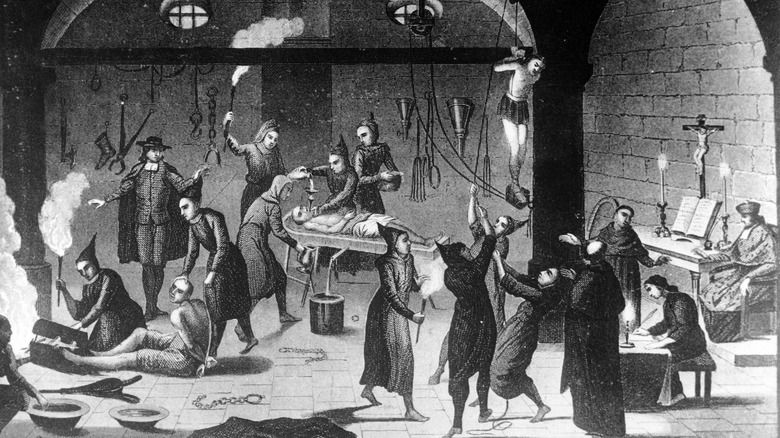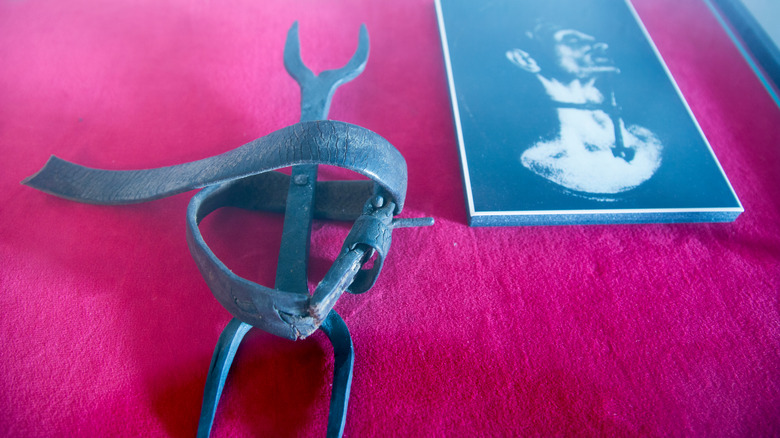How Heretic Forks Became One Of The Cruelest Punishments Of All Time
In medieval times, various torture devices were used as punishments or to get confessions from prisoners. The most common ones include the rack, flaying, and rat torture, but there was one device specifically used for heretics. During the Spanish Inquisition, there was a widespread hunt for those who practiced religions other than Catholicism. According to History, Muslims, Jews, and Protestants were persecuted for their beliefs and tortured for their heresy.
At that time, inquisitors would visit different places and seek out non-Catholics to allow them to admit being heretics. Those who confessed would have to endure different types of torture as a form of punishment. The accused who did not confess were tortured and then executed, but many were also victims of false accusations. Abuse of power was common in those days, and even some of those who confessed to being heretics were executed via burning at the stake or other means. Either way, once a person was accused — wrongfully or not — torture would soon follow.
How does the heretic's fork work?
The heretic's fork is a leather belt that is secured snugly on the neck. Attached to it are two sharp prongs, with one pointing to the wearer's throat and the other pointing just above the sternum. Although the device looks simple, having it on will cause extreme and continuous pain to the wearer, per Torture Museum. Keeping the head in a steady position will prevent the tips of the prongs from piercing the skin, but of course, a person can only hold one position for so long before getting tired.
It is said that those who wore the heretic's fork threw their heads back to the skies as if looking up at the heavens to avoid being pierced by the sharp ends of the prongs. But the lengths of its prongs were made in such a way that those who resorted to killing themselves rather than enduring the torture wouldn't die immediately. Instead, once they were pierced, they would go through a long torturous death by bleeding out of their wounds. According to Medievality, the heretic's fork was typically used to get a confession, but it was sometimes used after a confession to prevent the heretic from speaking further.

